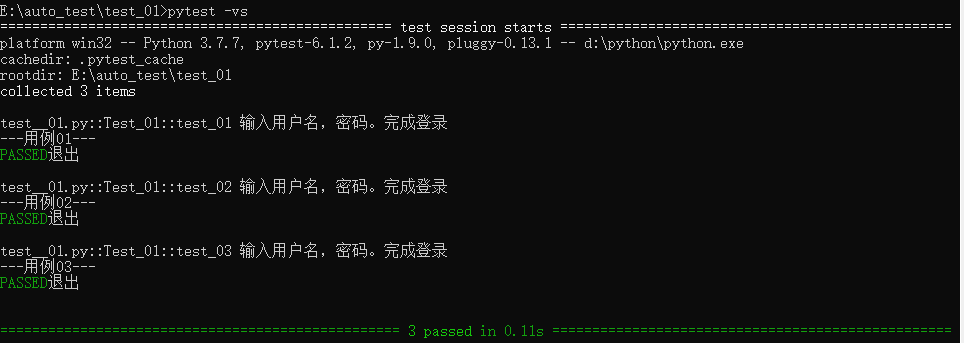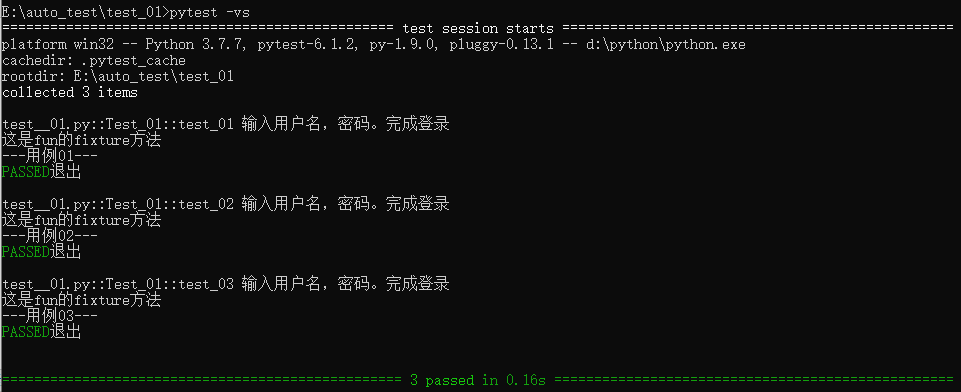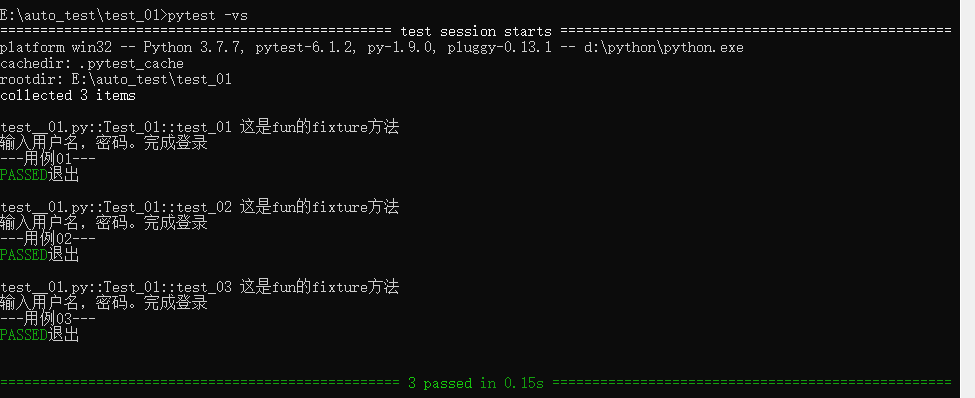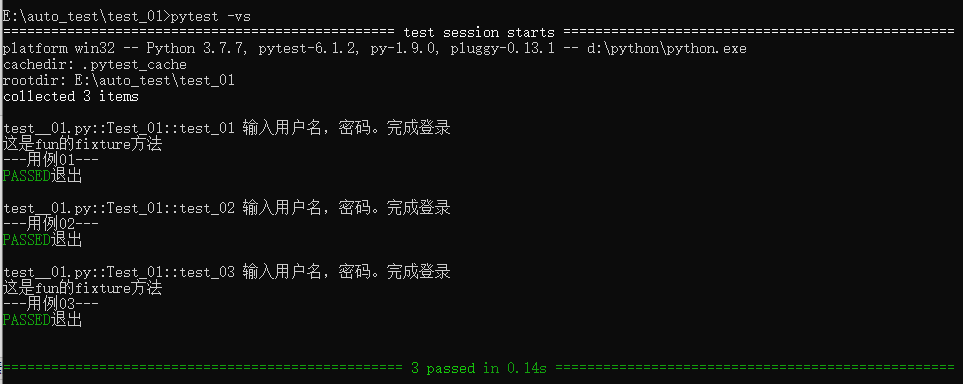前面介绍的fixture都是通过函数的方式进行传参的,如果遇到一个class中都需要传入一个fixture,那一个个写进函数中,太麻烦,今天安静介绍一种方法,通过class直接传入fixture
usefixtures
usefixtures是fixture用来标记class中的一个方法。用法结果相当于和setup和teardown的结果一样。每个用例函数都会进行执行fixture中的前置内容和后置内容
#coding:utf-8 import pytest @pytest.fixture() def login(): print('输入用户名,密码。完成登录') yield print('退出') @pytest.mark.usefixtures('login') class Test_01: def test_01(self): print('---用例01---') def test_02(self): print('---用例02---') def test_03(self): print('---用例03---') if __name__ == '__main__': pytest.main(['-vs', 'test__01.py'])

通过执行结果可以发现,通过使用usefixture方法后,class下的每个用例都会执行前置和后置内容。
多个usefixture使用
如果我们需要对一个class中传入多个fixture,我们就可以直接叠加2个usefixture方法,有2种写法:
第一种:
直接在usefixture中进行加入另外的fixture方法名称
#coding:utf-8 import pytest @pytest.fixture() def fun(): print('这是fun的fixture方法') @pytest.fixture() def login(): print('输入用户名,密码。完成登录') yield print('退出') @pytest.mark.usefixtures('login','fun') class Test_01: def test_01(self): print('---用例01---') def test_02(self): print('---用例02---') def test_03(self): print('---用例03---') if __name__ == '__main__': pytest.main(['-vs', 'test__01.py'])

这种方法的执行顺序,那个fixture名称在前面,就先执行那个方法
第2种:
通过叠加的形式进行传参,再次创建一个usefixture方法
#coding:utf-8 import pytest @pytest.fixture() def fun(): print('这是fun的fixture方法') @pytest.fixture() def login(): print('输入用户名,密码。完成登录') yield print('退出') @pytest.mark.usefixtures('login') @pytest.mark.usefixtures('fun') class Test_01: def test_01(self): print('---用例01---') def test_02(self): print('---用例02---') def test_03(self): print('---用例03---') if __name__ == '__main__': pytest.main(['-vs', 'test__01.py'])

这种方法的执行顺序,那个usefixture方法在下面,先执行那个。
混合使用
我们还有一种使用方法就是函数的fixture和类的usefixture同时使用
#coding:utf-8 import pytest @pytest.fixture() def fun(): print('这是fun的fixture方法') @pytest.fixture() def login(): print('输入用户名,密码。完成登录') yield print('退出') @pytest.mark.usefixtures('login') class Test_01: def test_01(self,fun): print('---用例01---') def test_02(self): print('---用例02---') def test_03(self,fun): print('---用例03---') if __name__ == '__main__': pytest.main(['-vs', 'test__01.py'])

通过上面执行结果可以看出来,usefixture和fixture可以同时使用,执行的顺序肯定是先usefixture然后在fixture。